During early October, the ground acquisition of EM data took place near Gerena (Spain) in an area under permission of Cobre Las Cruces Mine (First Quantum Minerals). This site is one of the two in Spain where the INFACT Project will acquire airborne geophysical data, once the low-altitude flight permission is granted by the Spanish Aviation Authority. It was decided to start the ground campaign in Las Cruces to avoid the frequent precipitations of late October.
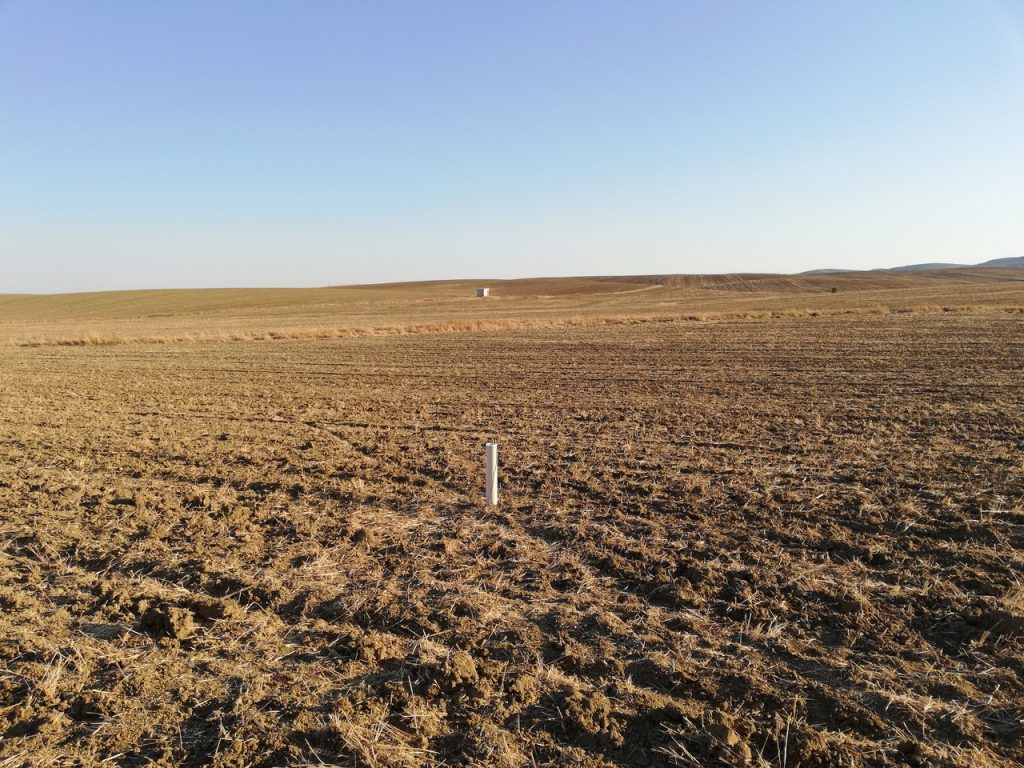
Area in the field south of Cobre Las Cruces Mine, where soundings were acquired. Antenna pictured in the center of the loop. Photo credit: Joan Marie Blanco.
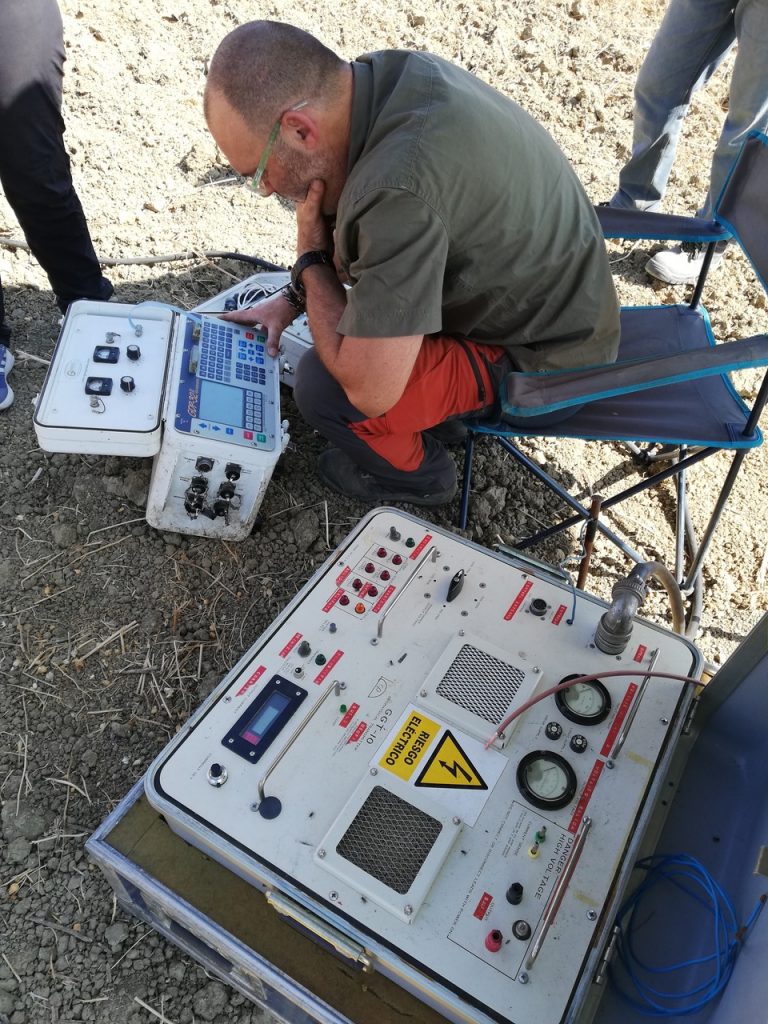
Emilio (Geognosia) setting up for acquiring with the Zonge equipment. Photo credit: Joan Marie Blanco.
Partners from Aarhus Geophysics, Geognosia, and HZDR carried out 37 soundings along N-S lines with the objective of determining the depth of the Tertiary in the eastern portion of the Spanish pyritic belt, which in the area is characterized by massive sulfides. The equipment used was a Zonge (GGT-10), a Geonics 47, and a Geonics 57. The size of the loops were 100m. x 100m. except to the northernmost part of the area where the Tertiary is found at shallower depth, for which loops of 50m. x 50m. were used.
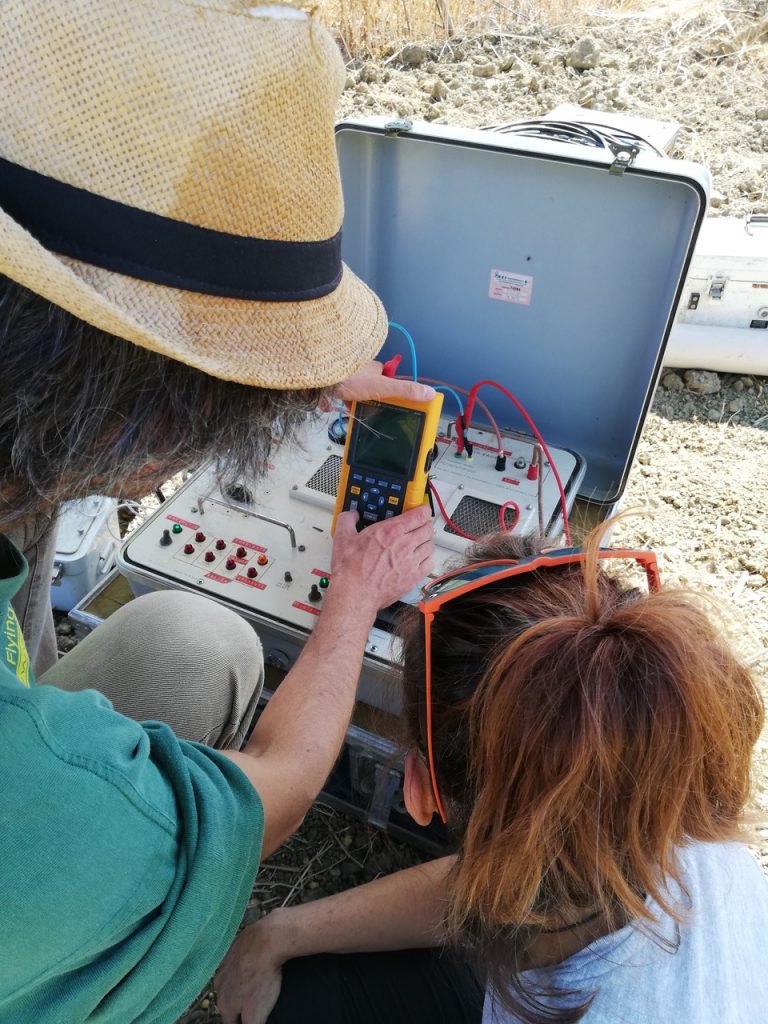
Isla (Geognosia) and Andrea (Aarhus) determining the waveform before acquiring with the Zonge equipment. Photo credit: Joan Marie Blanco.
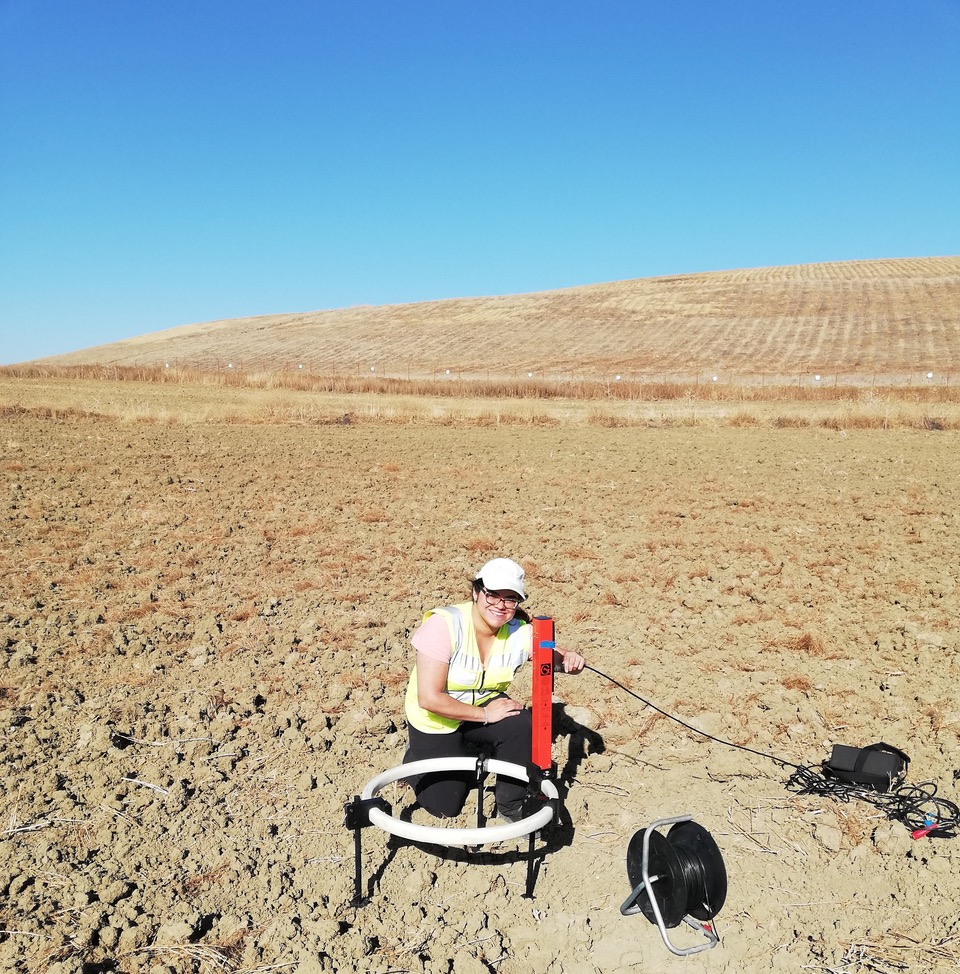
Joan Marie (HZDR) connecting the Geonics 47’s antenna. Photo credit: Giovanni Manca.
The other site in Spain where INFACT will test exploration technologies is Minas de RioTinto (Atalaya Mining) in the province of Huelva. To get familiar with the area, partners of Aarhus Geophysics and HZDR, in company of Isla Fernandez from Geognosia, visited the Proyecto RioTinto. During our stay we were hosted by Angelo Farci, geologist, who took us to a guided trip to the mine.
We visited Cerro Colorado, where he explained the different geological units existing in the area by 1930 and how and when they were exploited, followed by a visit to La Corta Atalaya. When active Corta Atalaya was the largest open-pit in Europe and, in my opinion, it is a really impressive man-made landscape with the RioTinto river and its burgundy waters. We also visited some roman ruins currently excavated on site: the remaining of family houses built using scoria as construction material, showing how back when they were built, the mine was the main economic activity for the population that settled in the area.
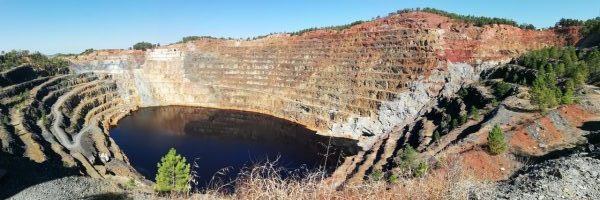
Panoramic of El Corte Atalaya at the RioTinto Mine. Photo credit: Joan Marie Blanco.
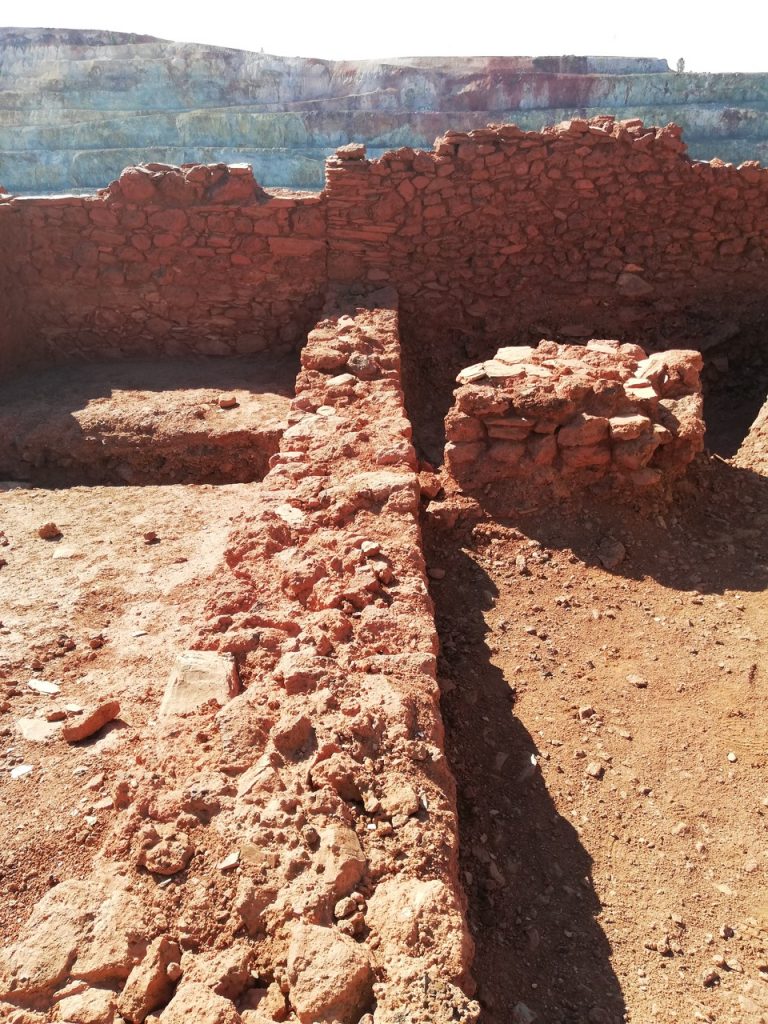
Roman ruins excavated at the RioTinto Mine. Photo credit: Joan Marie Blanco.
In addition to the benefits of having ground EM measurements for QC and modeling and to strengthen relationships with our partners, my participation in the ground campaign and the greater understanding of ground EM methods derived from it, is really important for future tasks I’ll perform as part of the INFACT project. Having that experience in a warm, sunny, and beautiful place in the South of Spain, filled with hospitable people is something I’ll always treasure.
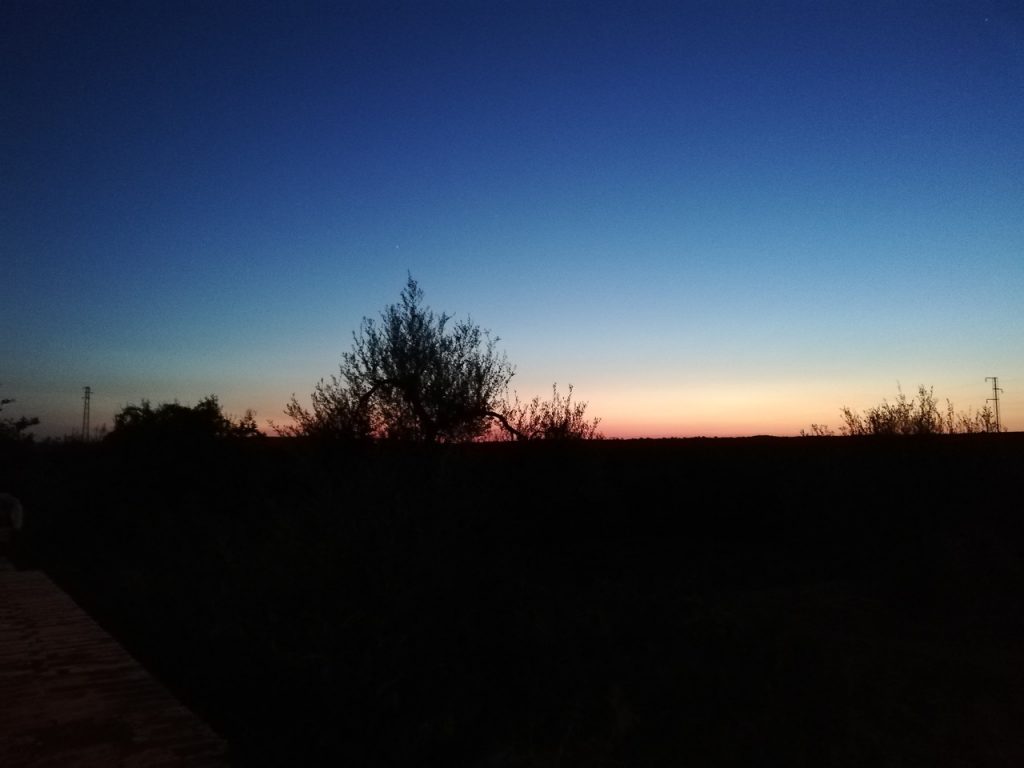
Sunset near Gerena, Spain. Photo credit: Joan Marie Blanco.
Looking forward to go back to Spain for the airborne geophysical acquisition campaign.
Thanks for visiting,
Joan Marie
This post was written by Geophysicist Dr. Joan Marie Blanco who is working at the Helmholtz-Zentrum Dresden-Rossendorf (HZDR) for the INFACT project.
The INFACT Campaign 2018 posts series will be featuring the development of the flight campaign in the 3 reference sites (Finland, Germany and Spain) in summer 2018. The posts will describe the major achievements of the tests in a rather personal approach.
_ _ _
Follow us on social media!

